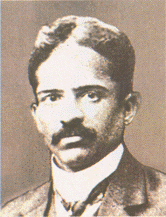THE
FATHER OF INDIAN CINEMA
Phalke's entry into films was entirely accidental, a momentary love affair which became
the passion of a lifetime. Inspired by The Life Of Christ (1910), which he saw at the
America India Picture Palace at Sandhurst Road in Bombay on December 25, 1910, Dadasaheb
Phalke was fired with the ambition of making a story-film based on the life and doings of
Lord Krishna. This was not the first time that he was seeing this new art form for he had
made several forays into the tent cinemas before this. This time, however, the impact was
different because fate had manoeuvred him into a curious position. He had just quarrelled
with Seth Purushottam Vishram Mavji, his partner at the Laxmi Art Printing Works, and had
quit the press, vowing never to return to the printing profession. His future, therefore,
loomed ahead like a big question mark.
In a sense, Phalke was ideally suited for the newly-emerging medium of cinema. A graduate
of the J.J. School of Arts in Bombay and the Kala Bhavan in Baroda, Phalke was a man of
many talents: drawing, painting, photography, printing, engraving, lithography, moulding,
architecture, music, magic and even stage acting. Born on April 30, 1870 at Trimbak, on
the outskirts of Nasik, Dhundiraj Govind Phalke was the son of Sanskrit scholar and
college professor Dajishastri Phalke. He was educated at Trimbak, Bombay (where his father
was working as Professor of Sanskrit at the Wilson College) and later Baroda where he got
a good grounding in the Arts.
Home
Raja Harishchandra
Raja Harishchandra-The Story
After 'Raja Harishchandra'
Back in India
The Hindustan Film Company
The Last Days
